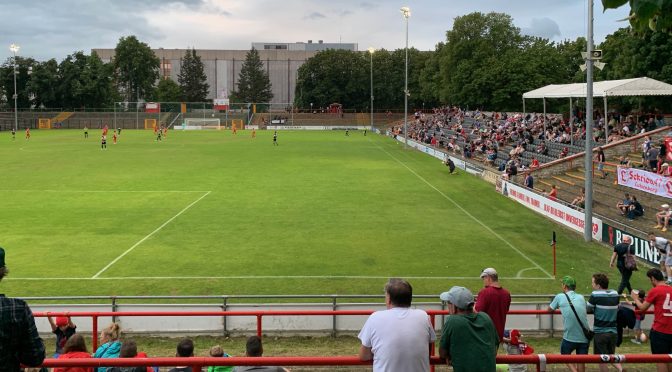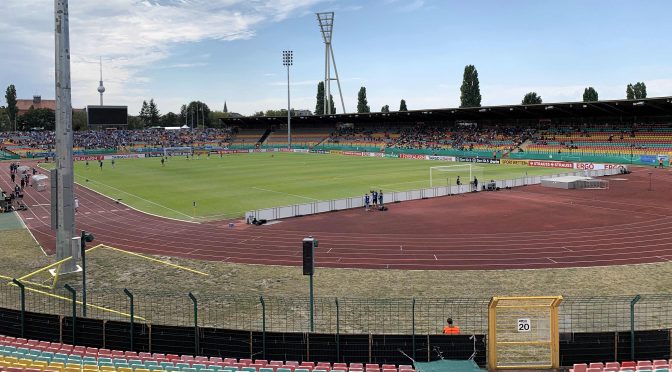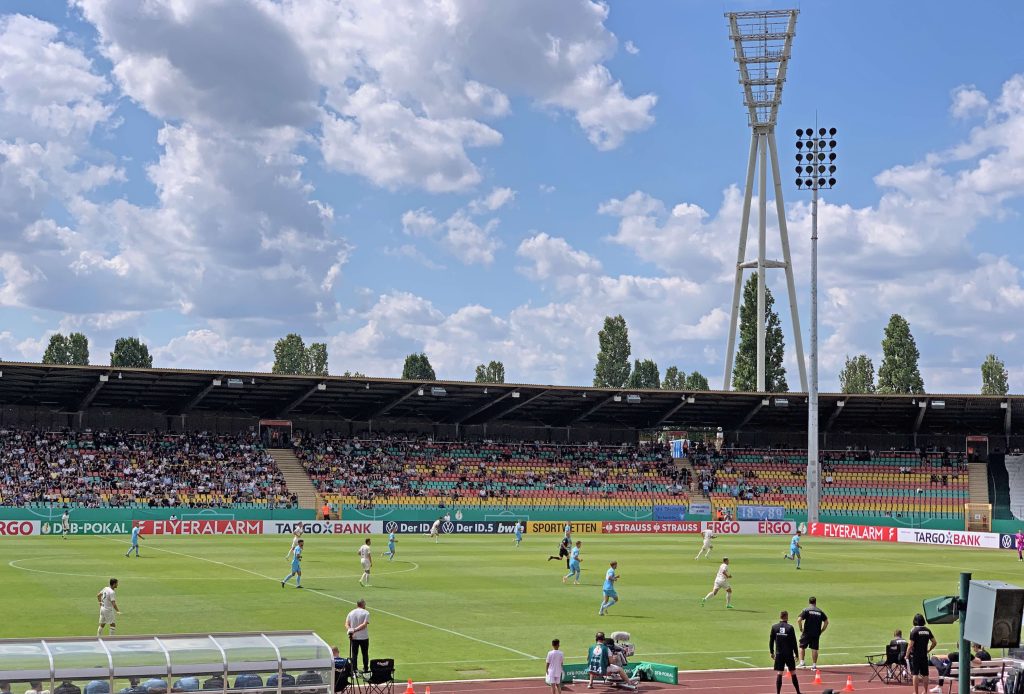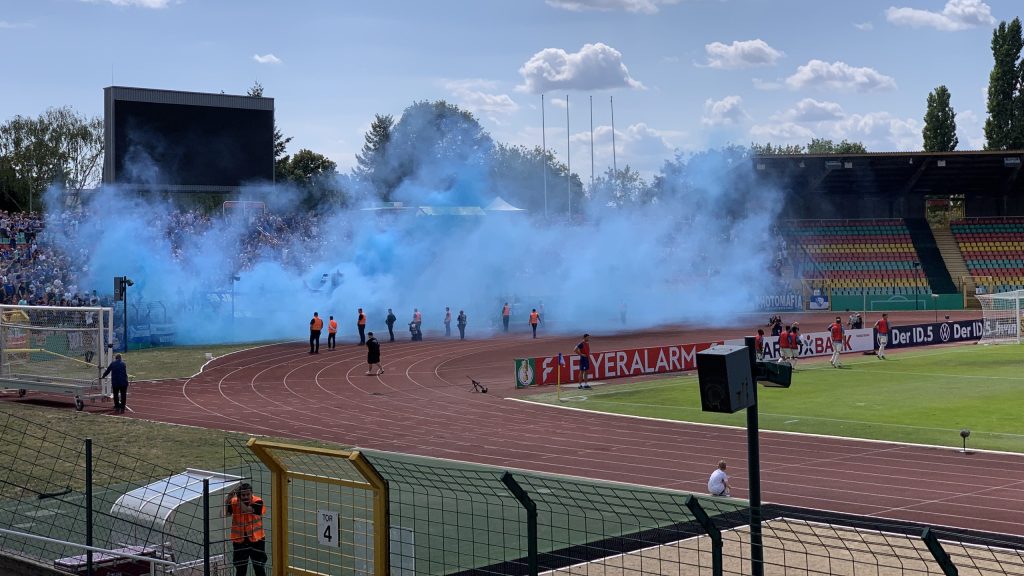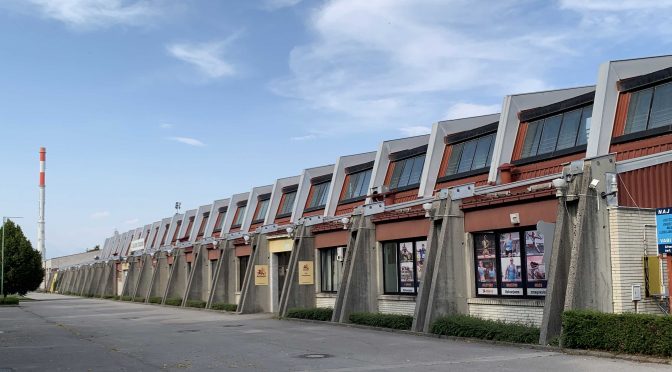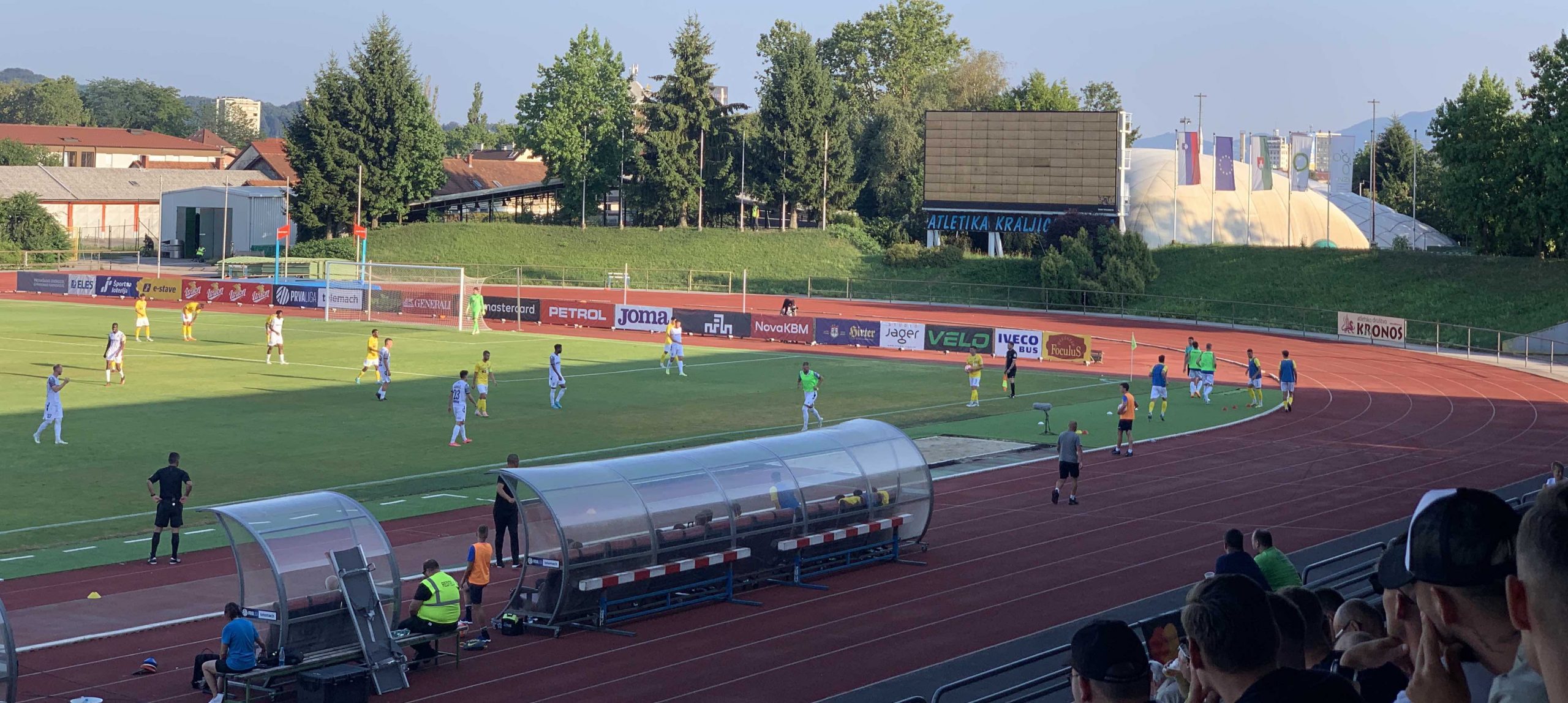Friday, Aug. 5, 2022: Berlin, Germany
SV Lichtenberg 47 2, Germania Halberstadt 1
My European vacation was drawing to a close but I lingered long enough to catch the opening night of the Regionalliga Nordost in Berlin.
This is the fourth division level of German soccer, the highest level organized regionally, and perhaps the hardest to advance from, with five regional leagues sending four teams to the national 3. Liga through a nearly incomprehensible rotating playoff system.
It was a pleasant summer night in Berlin to wander from the U-Bahn past the former Stasi headquarters to the Hans-Zoschke-Stadion, a grass-growing-through-the-concrete relic of East Germany and the comfortable home for the neighborhood football team, itself a survivor of East Germany’s lower leagues.
The game presentation, such as it is, begins with AC/DC’s Thunderstruck cranking through the PA, giving way to a nicely paced, enjoyable-to-watch game of soccer.
I didn’t have to wait too long for a goal, as in the eighth minute the home squad’s Efraim Gakpeto, loosely marked, headed in a corner, punctuting the moment with a multi-flip somersault celebration.
His joy was well-earned — on a Crash Davis-esque note, this 30-year-old, after a career playing in various sub-regional leagues in and around Berlin, was playing his first game at the fourth-division level.
The Halberstadters were off to a slow start, but they began to find their footing from the 20th minute on, consistently getting the better of the ball, without producing much goal threat.
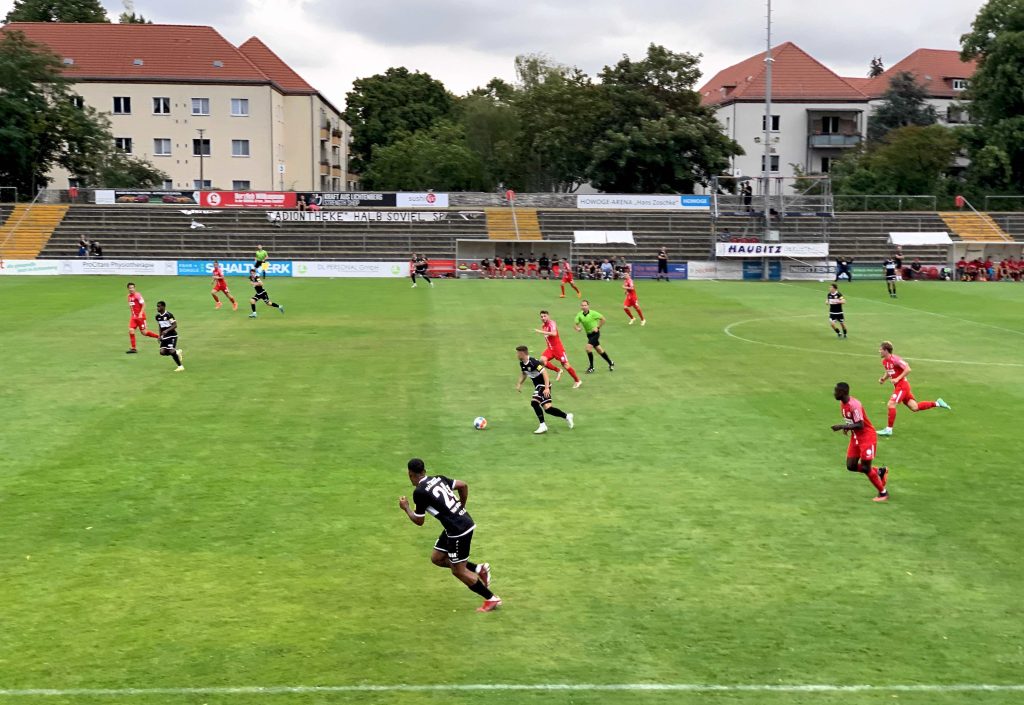
Only to see Gakpeto punch up his Hollywood storyline even more in the 35th minute, pouncing on a rebound to secure a brace in his Regionalliga debut and give the home team a 2-0 lead.
Halberstadt came out strong in the second half, eventually rewarded in the 61st minute when Jessim Jallot fired in a rocket from the corner of the box.
It was a nice treat for the 20 or so Halberstadt ultras who made the trip.
In the game’s last ten minutes, Halberstadt pressured for what seemed like it would be an an inevitable goal, but the desperate defense of the home team did not break, with some moral support from the 668 fans on hand.
The crowd, a demographic weighted toward cigarette smoking people of my middle-aged generation with the tattooed hard-man aesthetic that I lack, got louder and harder as the end neared, spurring their club to defend desperately and successfully.
It was a great evening of football played with pace, passion and what I thought was a decent level of quality. But the 17 matchdays that took place before I began to write up my notes tell me that the Regionalliga has a lot more to offer: Lichtenberg has only won twice more, putting them in a relegation battle, while Halberstadt hasn’t won a game all season and seems all but doomed to go down to one of the Oberligas next year.
Reunion time: The first day of the season was a reunion time for club members who were very social with each other, but football-savvy enough to bring on the “Lichtenberg, Lichtenberg” chants when the game warranted it, particularly during the late-game defense.
Culture shock: The pfand shouldn’t surprise me any more in Germany, but it took me a little bit to process how to work the deposit token one gets when one orders a beer. I eventually figured it out, getting my Euro-per-cup deposit back through a system that keeps the plastic-cup litter under control.
A game summary (in German) is here.
Game highlights are here.

